If you’ve ever wondered about the secret world of plants and their intriguing relationships with rodents, you’re in for a treat. In this article, we’re diving headfirst into the fascinating realm of plants that have the power to repel and attract mice – those tiny, scurrying critters that often find their way into our homes and gardens. Let’s get started, shall we?

1. Garlic – Repel
Garlic is a pungent and flavorful bulb often used in cooking. It also has been known for its unique ability to repel mice. The strong scent of garlic, caused by sulfur compounds like allicin, can be overpowering to rodents like mice. These creatures rely heavily on their sense of smell, and the strong odor of garlic is something they find unappealing.
When mice encounter the potent aroma of garlic, their sensory receptors are affected, leading them to avoid areas where the smell is prevalent. This natural repellent quality of garlic makes it a popular choice for people looking to keep mice out of their homes and gardens without resorting to harsh chemicals.
To use garlic as a mouse repellent, people often crush or mince cloves of garlic and spread them around areas where mice might be likely to enter, such as near entrances, cracks, and openings. Additionally, placing garlic cloves in key locations or hanging garlic bulbs can help deter mice from approaching.
It’s important to note that while garlic can be effective in repelling mice, it might not work as a standalone solution for severe infestations. Combining garlic with other preventive measures such as proper sanitation, sealing entry points, and maintaining a clean environment is crucial for comprehensive pest control.
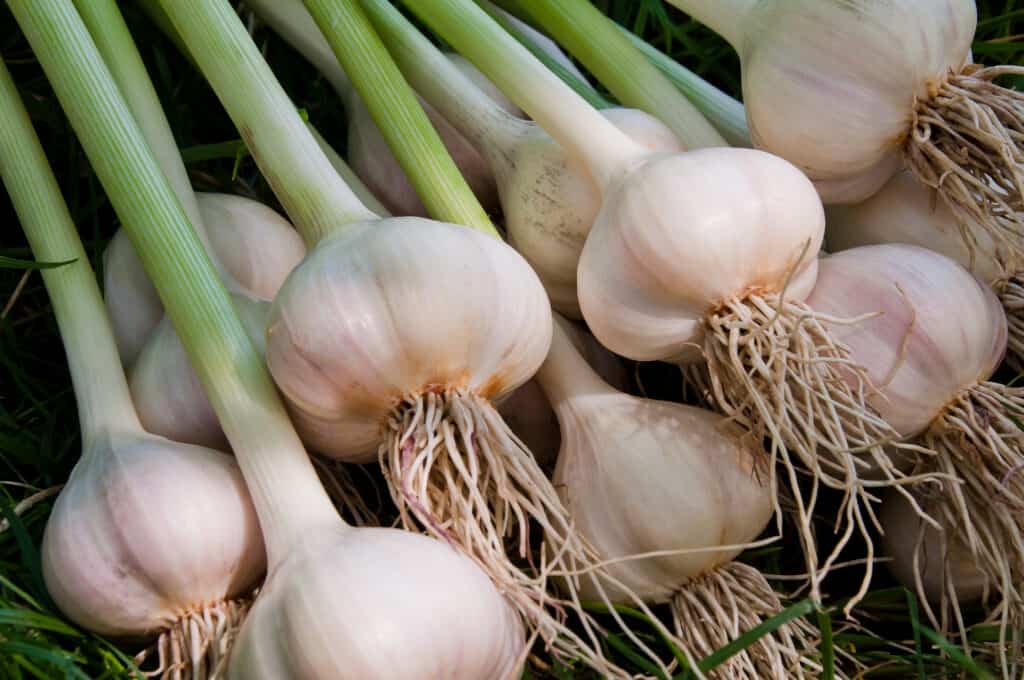
Some plants, like rosemary and garlic, are unpleasant to deer as well as mice.
©Liubomyr Tryhubyshyn/Shutterstock.com
2. Lavender – Repel
Lavender is known for its fragrant purple blooms and soothing aroma. It has also garnered attention for its ability to repel mice. The sweet yet strong scent of lavender, primarily derived from its essential oils, can serve as a natural deterrent for these pesky rodents.
Mice possess a heightened sense of smell, which they rely on to navigate their environment and detect potential threats. When exposed to the potent fragrance of lavender, mice can find the scent overwhelming and unpleasant, causing them to avoid areas where lavender is present.
The essential oils found in lavender, such as linalool and linalyl acetate, are responsible for its distinct smell and repellent properties. These compounds can interfere with mice’s ability to communicate and navigate, making spaces scented with lavender less attractive to them.
To utilize lavender as a mouse repellent, individuals often place dried lavender sachets or essential oil-soaked cotton balls in areas where mice are likely to enter, such as near entry points, corners, or spaces where they’ve been spotted before. Planting lavender around the perimeter of gardens or near structures can also help deter mice from getting too close.
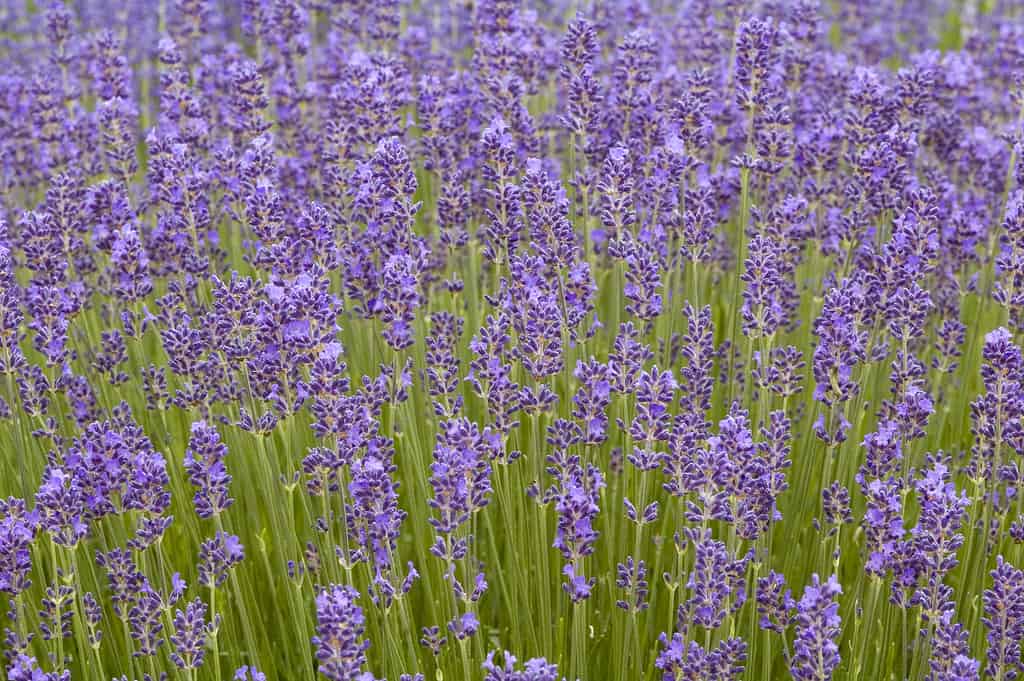
Lavender is a great mice repellant that also smells quite nice.
©gardendata/ via Getty Images
3. Mint – Repel
Mint is a fragrant herb known for its vibrant green leaves and refreshing scent. The leaves are small, oval-shaped, and often have serrated edges. Mint plants can grow to be around one to two feet tall and spread out with a lush appearance.
Apart from its pleasant aroma, mint has a variety of uses. It is commonly used in culinary endeavors to add flavor to dishes, teas, and beverages. Its versatility extends to medicinal purposes, as it is believed to aid digestion and soothe minor ailments. Mint’s essential oils, like menthol and pulegone, contribute to its distinct scent and potential health benefits.
Interestingly, mint has also gained a reputation for its ability to repel mice. Mice possess a heightened sense of smell, which they rely on for finding food and avoiding danger. The strong aroma of mint, particularly its menthol and pulegone compounds, can be overpowering and unpleasant for mice. When mice encounter the scent of mint, they tend to steer clear of areas where it’s present.
Mint’s scent disrupts the mice’s communication and navigation systems, making spaces scented with mint less inviting for these rodents. This natural repellent quality makes mint a popular choice for people looking to keep mice out of their homes and gardens without resorting to harsh chemicals.
To use mint as a mouse repellent, individuals often plant mint around their properties or place crushed mint leaves in areas prone to infestation. Mint essential oil can also be used by soaking cotton balls and placing them strategically near potential entry points.
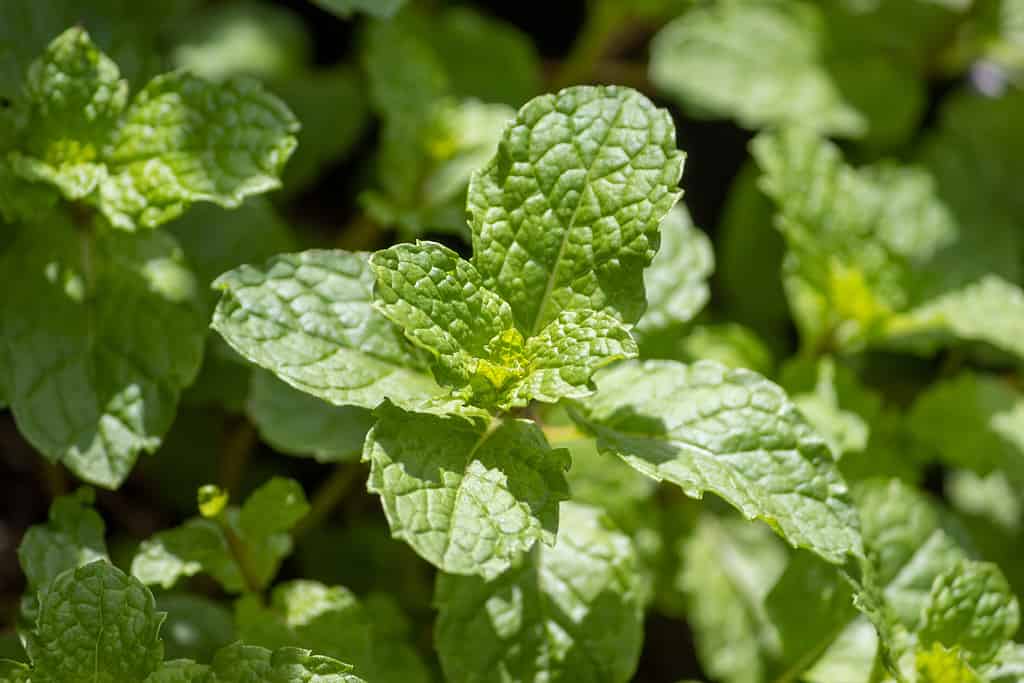
Mint is excellent at repelling many different types of rodents.
©Leo Herdy/Shutterstock.com
4. Sage – Repel
Sage is an aromatic herb characterized by its woody stems, soft leaves, and distinct fragrance. The leaves are grayish-green and have a textured surface, with a shape that’s oblong and slightly curved. Sage plants can grow up to two feet in height, with delicate flowers that can range from blue to purple.
This versatile herb is widely used for both culinary and medicinal purposes. In cooking, sage leaves add a robust flavor to various dishes, particularly in stuffing and sauces. Medicinally, sage is believed to have properties that can soothe sore throats, aid digestion, and provide relief for certain ailments.
Beyond its culinary and health applications, sage is also recognized for its ability to repel mice. Mice have an acute sense of smell that guides their behaviors, and they tend to avoid strong odors that they find unpleasant. The strong aroma of sage, produced by its essential oils like thujone and cineole, can be overpowering for mice, causing them to stay away from areas scented with sage.
The essential oils found in sage disrupt the mice’s sensory perceptions and navigation abilities, making spaces with sage less appealing to them. This natural repellent quality makes sage a useful option for individuals seeking to deter mice from their homes or gardens without resorting to harsh chemicals.
To utilize sage as a mouse repellent, people often place dried sage leaves in areas prone to mice activity, such as near entry points, corners, or spaces where rodents have been seen. Sage essential oil can also be applied to cotton balls and strategically placed to keep mice away.
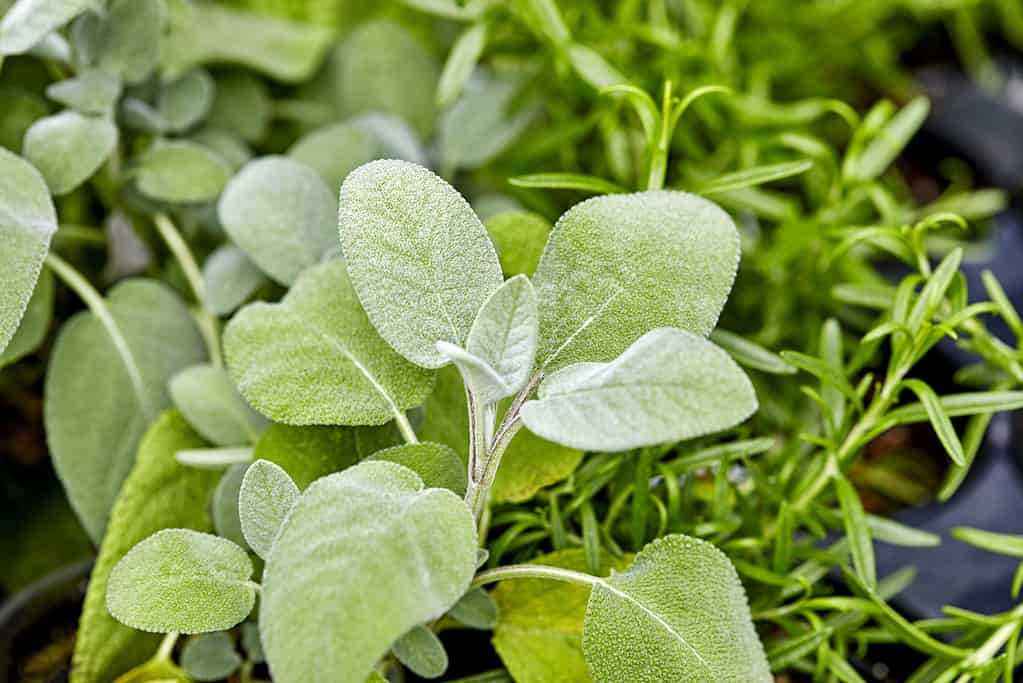
Sage is quite easy to grow in addition to being a great mouse repellant.
©iStock.com/wingedwolf
5. Corn – Attract
Corn is recognized for its tall stalks and distinctive cobs and it is a cereal grain with various uses and qualities. The corn plant features long, upright stems that can grow several feet in height. At the top of these stems, tassel-like structures emerge, releasing pollen that fertilizes the female flowers on the cobs.
Corn holds diverse applications in both human consumption and industry. As a staple in diets worldwide, corn kernels can be cooked, ground into flour, or transformed into snacks like popcorn. Additionally, corn is a valuable ingredient in products ranging from livestock feed and biofuels to corn syrup and industrial materials.
However, the presence of corn can also attract mice, particularly in agricultural settings. Mice are drawn to cornfields due to the abundance of food in the form of ripe corn kernels. The sweet and starchy composition of corn makes it an appealing food source for these rodents.
Mice are skilled at exploiting areas where they can find sustenance, and cornfields provide an abundant supply. The scent of ripe corn can lure mice from their hiding places, leading to infestations that can damage crops and stored grains.
To mitigate the attraction of mice to cornfields, farmers often implement pest management strategies. These measures may include proper storage of harvested corn, regular field maintenance, and the use of traps or repellents to deter mice from the area.

Professional corn farmers often have issues keeping mice from eating their crops.
©iStock.com/prayong kotjuk
6. Sunflower – Attract
Sunflowers are known for their bright and cheerful appearance. They are tall flowering plants with distinct features. These plants are characterized by their towering stems that can reach impressive heights, often adorned with large, vibrant yellow flower heads. The petals of sunflowers radiate outward from a central disk, creating a captivating and iconic image.
Sunflowers have various uses, both practical and aesthetic. In agriculture, they are cultivated for their seeds, which are rich in oil and nutrition. Sunflower oil is extracted from these seeds and is commonly used in cooking and food production. The seeds themselves are consumed as snacks or added to dishes for an extra crunch. Additionally, sunflowers hold ornamental value and are often planted in gardens to enhance visual appeal.
However, sunflowers can also attract mice, primarily due to the abundance of seeds they produce. Mice are opportunistic feeders, and the availability of sunflower seeds in gardens or fields can entice them. The seeds’ high fat and protein content make them a desirable food source for mice.
Mice are skilled at foraging and can easily locate areas abundant with food. The scent of sunflower seeds, combined with the visible presence of the large flower heads, can draw mice from surrounding areas, leading to potential infestations.
To mitigate the attraction of mice to sunflowers, individuals may employ pest management tactics. These measures can include regular garden maintenance, proper storage of harvested sunflower seeds and utilizing traps or repellents to deter mice from approaching the plants.
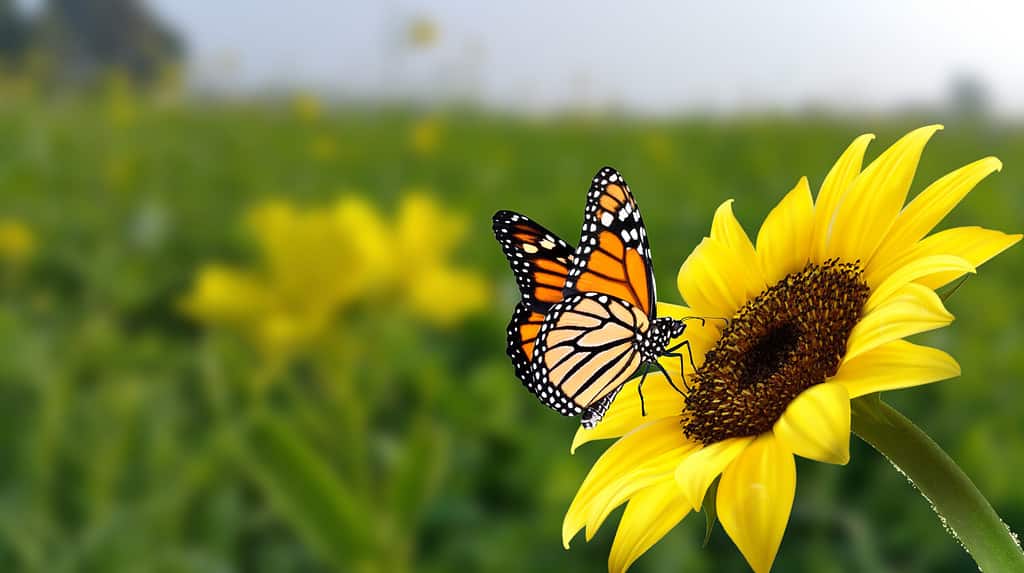
Sunflowers may attract unwanted pests, but they also attract beneficial pollinators as well.
©Candy_Plus/Shutterstock.com
7. Chestnut Trees – Attract
Chestnut trees are notable for their towering stature and distinctive leaves. They are deciduous trees with unique characteristics. These trees feature a broad canopy of dark green leaves that are elongated and serrated along the edges. The nuts produced by chestnut trees are encased in spiky burrs, which split open as they mature to reveal the edible chestnuts within.
Chestnut trees serve various purposes, both practical and culinary. The chestnut nuts they produce are a nutritious food source, often roasted or boiled for consumption. The wood of chestnut trees is also prized for its durability and resistance to decay, making it valuable for crafting furniture, barrels, and other wooden items.
Chestnut trees can inadvertently attract mice due to the abundance of fallen nuts on the ground. Mice are opportunistic feeders, and the availability of chestnuts provides them with a readily accessible food source. The high carbohydrate content and rich taste of chestnuts make them appealing to mice seeking nourishment.
Mice are skilled at locating food, and the scent of fallen chestnuts can lure them from their hiding places. As they forage for food, mice might infest areas around chestnut trees, potentially leading to damage to the tree’s nuts or even the tree itself.
To address the attraction of mice to chestnut trees, individuals can employ pest management methods. Regular cleanup of fallen nuts and debris can help reduce the availability of food for mice. Additionally, using traps or repellents can discourage mice from frequenting the area around the trees.

Chestnuts also attract deer, squirrels, and even wild turkeys.
©Brzostowska/Shutterstock.com
8. Blueberries – Attract
Blueberries are recognized for their small round shape and deep blue hue. They are delicious and nutritious berries with distinct characteristics. These berries grow on low shrubs and are typically about the size of a marble. Their color ranges from deep blue to purplish-black, and they are often covered in a powdery bloom that gives them a slightly frosted appearance.
Blueberries have multiple uses, primarily as a flavorful and healthful fruit. They are enjoyed fresh as a snack, added to various dishes like cereals, yogurts, and desserts, or used in the creation of jams, jellies, and baked goods. Notably, blueberries are rich in antioxidants, vitamins, and dietary fiber, contributing to their reputation as a superfood.
However, blueberries can attract mice due to their appealing taste and the availability of fallen berries on the ground. Mice are opportunistic eaters, and the sweet flavor of blueberries entices them. The sugar content in blueberries makes them an attractive food source for mice seeking sustenance.
Mice have a keen sense of smell and can detect the scent of ripe or fallen blueberries from a distance. As they forage for food, they may be drawn to areas where blueberries are grown, potentially leading to infestations that can affect crops and gardens.
To address the attraction of mice to blueberries, individuals can implement pest management practices. Regular harvesting and cleanup of fallen berries can reduce the availability of food for mice. Just as well, using traps or repellents can help discourage mice from approaching the area.
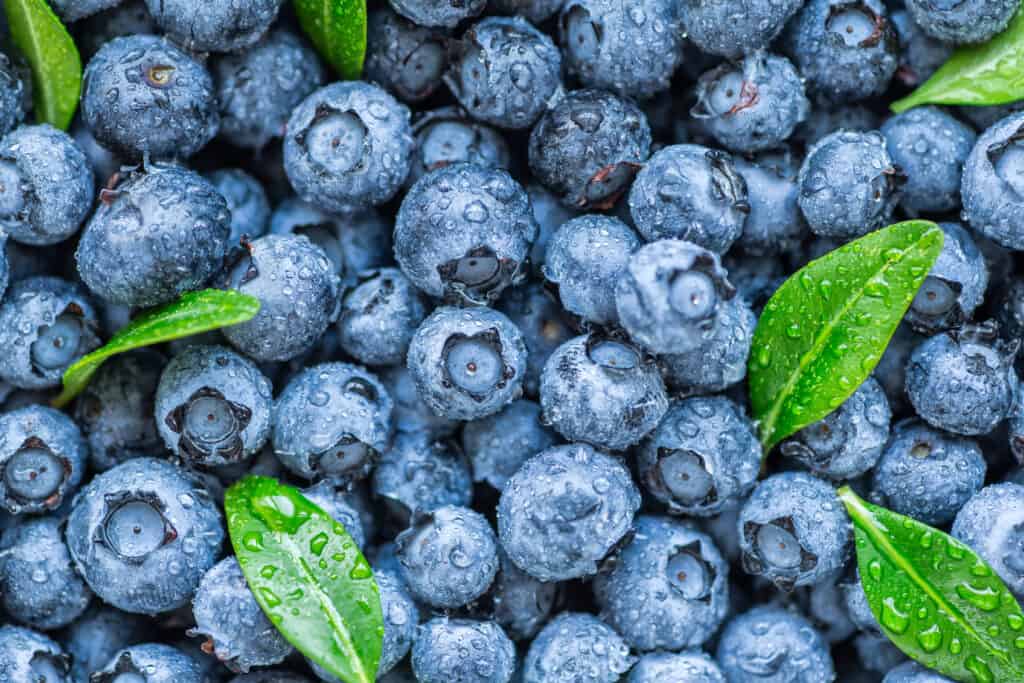
Blueberries can attract several other animals that enjoy its sweet, tangy flavor.
©Bukhta Yurii/Shutterstock.com
Other Ways to Repel Mice
There are a few other effective methods to repel mice from homes and outdoor areas without resorting to planting certain plants or using harsh chemicals. One approach is maintaining proper cleanliness. Cleaning up food crumbs, spills, and keeping areas free of clutter can discourage mice from finding sources of sustenance. Additionally, sealing entry points is crucial. Mice can fit through small openings, so sealing cracks, gaps, and holes in walls, floors, and foundations can prevent their easy access.
Using essential oils can be another useful technique. Certain essential oils, like peppermint or cedarwood oil, have strong scents that mice find unpleasant. Placing cotton balls soaked in these oils in areas where mice are likely to enter or frequent can act as a natural repellent. Another option is using ultrasonic devices that emit high-frequency sounds humans can’t hear, but mice find irritating. These devices create an uncomfortable environment for mice, prompting them to stay away.
Traps can also serve as effective repellents. Snap traps and glue traps can catch mice that venture into your living space. These traps should be placed in areas with mouse activity and checked regularly. Another option is using humane live traps, which capture mice without harming them. Once caught, you can release the mice far from your home.
Some people turn to natural deterrents like cat litter or predator urine. The scent of these substances signals to mice that predators are nearby, making them less likely to stay in the area. Additionally, keeping yards tidy by removing debris and cutting tall grass can eliminate hiding spots and discourage mice from nesting.
Summary of Plants That Either Repel or Attract Mice
| # | Plants | Keep or Repel |
|---|---|---|
| 1 | Garlic | Repel |
| 2 | Lavender | Repel |
| 3 | Mint | Repel |
| 4 | Sage | Repel |
| 5 | Corn | Attract |
| 6 | Sunflower | Attract |
| 7 | Chestnut Trees | Attract |
| 8 | Blueberries | Attract |
The photo featured at the top of this post is © iStock.com/Bruno_il_segretario
Thank you for reading! Have some feedback for us? Contact the AZ Animals editorial team.







